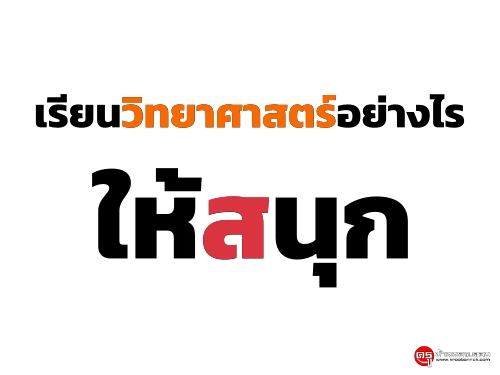ชื่อเรื่อง การพัฒนารูปแบบการบริหารจัดการเรียนรู้สู่อาชีพของผู้เรียนโดยใช้โรงเรียน
เป็นฐานของโรงเรียนเทศบาล 2 (วัดสมอราย)
The Model Development of Career Learning Management for student
by Using School Based Management
ชื่อผู้วิจัย นายชูชาติ โจมฤทธิ์
ปีที่พิมพ์เผยแพร่ 2561
บทคัดย่อ
การวิจัยเรื่อง การพัฒนารูปแบบการบริหารการจัดการเรียนรู้สู่อาชีพของผู้เรียนโดยใช้โรงเรียนเป็นฐาน มีวัตถุประสงค์การวิจัยคือ 1) ศึกษาข้อมูลพื้นฐานในการพัฒนารูปแบบการบริหารการจัดการเรียนรู้สู่อาชีพของผู้เรียนโดยใช้โรงเรียนเป็นฐาน 2) เพื่อพัฒนารูปแบบการบริหารการจัดการเรียนรู้สู่อาชีพของผู้เรียนโดยใช้โรงเรียนเป็นฐาน 3) เพื่อทดลองใช้รูปแบบการบริหารการจัดการเรียนรู้สู่อาชีพของผู้เรียนโดยใช้โรงเรียนเป็นฐาน 4) เพื่อปรับปรุงรูปแบบการบริหารจัดการเรียนรู้สู่อาชีพของนักเรียนโดยใช้โรงเรียนเป็นฐาน การวิจัยนี้เป็นการวิจัยและพัฒนา (Research and Development) ประเภทวิจัยผสมผสานวิธี (Mixed Methods Research) โดยกลุ่มตัวอย่าง เครื่องมือ และสถิติที่ใช้ในแต่ละขั้นตอนคือ
ขั้นตอนที่ 1 การวิจัย (Research : R1) : การศึกษาข้อมูลพื้นฐานในการพัฒนารูปแบบการบริหารจัดการเรียนรู้สู่อาชีพของผู้เรียนโดยใช้โรงเรียนเป็นฐาน กลุ่มเป้าหมาย คือ ครู โรงเรียนเทศบาล 2 (วัดสมอราย) จำนวน 42 คน และผู้ทรงคุณวุฒิจำนวน 5 คน โดยการเลือกแบบเจาะจง (Purposive Sampling) เครื่องมือที่ใช้ในการวิจัยเป็นแบบสอบถามความคิดเห็นเกี่ยวกับสภาพปัจจุบันและความต้องการการบริหารจัดการเรียนรู้สู่อาชีพของผู้เรียนโดยใช้โรงเรียนเป็นฐาน และแบบสัมภาษณ์ผู้เชี่ยวชาญเกี่ยวกับความต้องการและแนวทางการบริหารจัดการเรียนรู้สู่อาชีพของผู้เรียนโดยใช้โรงเรียนเป็นฐาน สถิติที่ใช้ในการวิเคราะห์ข้อมูล ได้แก่ ร้อยละ (%) ค่าเฉลี่ย (Mean) ส่วนเบี่ยงเบนมาตรฐาน (S.D.) และการวิเคราะห์เนื้อหา (Content Analysis)
ขั้นตอนที่ 2 การพัฒนา (Development : D1) : การพัฒนารูปแบบการบริหารจัดการเรียนรู้สู่อาชีพของผู้เรียนโดยใช้โรงเรียนเป็นฐาน กลุ่มเป้าหมาย คือ ผู้เชี่ยวชาญ จำนวน 5 คน เครื่องมือที่ใช้ได้แก่ แบบสัมภาษณ์เกี่ยวกับความเหมาะสมและความเป็นไปได้ของการบริหารจัดการเรียนรู้สู่อาชีพของผู้เรียนโดยใช้โรงเรียนเป็นฐาน สถิติที่ใช้ในการวิเคราะห์ข้อมูล ได้แก่ การวิเคราะห์เนื้อหา (Content Analysis)
ขั้นตอนที่ 3 การวิจัย (Research : R2) : การทดลองใช้รูปแบบการบริหารจัดการเรียนรู้สู่อาชีพของผู้เรียนโดยใช้โรงเรียนเป็นฐาน กลุ่มเป้าหมาย คือ ครูผู้สอนระดับมัธยมศึกษาปีที่ 1 3 จำนวน 12 คนและ นักเรียนระดับมัธยมศึกษาปีที่ 1 3 จำนวน 249 คน เครื่องมือที่ใช้ ได้แก่ แบบสอบถามความคิดเห็นและแบบสอบถามความพึงพอใจเกี่ยวกับการบริหารจัดการเรียนรู้สู่อาชีพของผู้เรียนโดยใช้โรงเรียนเป็นฐาน สถิติที่ใช้ในการวิเคราะห์ข้อมูล ได้แก่ ร้อยละ (%) ค่าเฉลี่ย (Mean) และส่วนเบี่ยงเบนมาตรฐาน (S.D.)
ขั้นตอนที่ 4 การพัฒนา (Development : D2) : การปรับปรุงรูปแบบการบริหารจัดการเรียนรู้สู่อาชีพของผู้เรียนโดยใช้โรงเรียนเป็นฐาน กลุ่มเป้าหมายคือ ผู้ที่มีส่วนเกี่ยวข้องในการจัดการศึกษา จำนวน 286 คน โดยการเลือกแบบเจาะจง (Purposive Sampling) ได้แก่ คณะผู้บริหารเทศบาลนครนครราชสีมา จำนวน 5 คน ครูสายชั้นมัธยมศึกษาตอนต้น จำนวน 12 คน คณะกรรมการสถานศึกษาขั้นพื้นฐาน จำนวน 15 คน ผู้ปกครองนักเรียนระดับมัธยมศึกษาตอนต้น จำนวน 249 คน และนักวิชาการ/ศึกษานิเทศก์ จำนวน 5 คน เครื่องมือที่ใช้ ได้แก่ แบบสอบถามความคิดเห็นเกี่ยวกับรูปแบบการบริหารจัดการเรียนรู้สู่อาชีพของผู้เรียนโดยใช้โรงเรียนเป็นฐาน สถิติที่ใช้ในการวิเคราะห์ข้อมูล ได้แก่ ร้อยละ (%) ค่าเฉลี่ย (Mean) และส่วนเบี่ยงเบนมาตรฐาน (S.D.)
ผลการวิจัยพบว่า
1. ข้อมูลพื้นฐานในการพัฒนารูปแบบการบริหารจัดการเรียนรู้สู่อาชีพของผู้เรียนโดยใช้โรงเรียนเป็นฐานได้แก่ การวิเคราะห์เอกสารที่เป็นแนวคิด ทฤษฎีและงานวิจัยที่เกี่ยวข้องกับรูปแบบการบริหารจัดการเรียนรู้สู่อาชีพของผู้เรียนโดยใช้โรงเรียนเป็นฐาน การสอบถามความคิดเห็นของครูผู้สอนซึ่งเป็นกลุ่มเป้าหมายจำนวน 42 คนการสัมภาษณ์ผู้ทรงคุณวุฒิจำนวน 5 คน การสังเคราะห์องค์ประกอบหลักเกี่ยวกับรูปแบบการบริหารจัดการเรียนรู้สู่อาชีพของผู้เรียนโดยใช้โรงเรียนเป็นฐานพบว่า การพัฒนารูปแบบไม่มีข้อกำหนดที่ตายตัวว่าจะพัฒนาดำเนินการอะไรบ้าง การจัดการเรียนรู้จะต้องส่งเสริมให้เด็กสามารถเรียนรู้ได้ด้วยตนเอง มีการเรียนการสอนที่เน้นผู้เรียนเป็นสำคัญ จัดการเรียนรู้ให้ทันต่อการเปลี่ยนแปลงของสังคมและประเทศชาติ ตามความถนัดความสนใจและศักยภาพของผู้เรียน จัดแหล่งเรียนรู้ที่หลากหลาย นักเรียนสามารถปฏิบัติได้จริง ที่สำคัญนักเรียนต้องเกิดทักษะการเรียนรู้ด้านอาชีพและมีรายได้ระหว่างเรียน โรงเรียนต้องอาศัยแหล่งเรียนรู้จากภายนอก และเชื่อมโยงประสบการณ์กับชีวิตจริงให้ผู้เรียนมีปฏิสัมพันธ์กับบุคคลอื่นเพื่อแลกเปลี่ยนเรียนรู้ จัดการเรียนรู้โดยให้ผู้เรียนคิดค้นคำตอบ มีการแก้ปัญหาด้วยตนเอง รู้จักประเมินตนเอง มีการเรียนรู้ตลอดชีวิต และจัดสภาพแวดล้อมในโรงเรียนให้เหมาะสมกับการเรียนรู้ตลอดชีวิต
2. รูปแบบการบริหารจัดการเรียนรู้สู่อาชีพของผู้เรียนโดยใช้โรงเรียนเป็นฐานที่พัฒนาขึ้น มีการดำเนินการเป็น 4 ขั้นตอนย่อย คือ 1) การจัดทำร่างรูปแบบประกอบด้วยการเรียนรู้จากหลักสูตรสถานศึกษา การเรียนรู้จากกิจกรรมส่งเสริมการเรียนรู้และ การเรียนรู้จากแหล่งเรียนรู้ 2) การออกแบบรูปแบบการบริหารสถานศึกษาโดยใช้กลยุทธ์การประชุมระดมความคิดเห็น วิเคราะห์ สังเกตการณ์ ได้รูปแบบโดยใช้ชื่อรูปแบบว่า SMR BEST SCHOOL MODEL 3) การจัดทำคู่มือการดำเนินการตามรูปแบบประกอบด้วย หลักการและเหตุผล วัตถุประสงค์ ข้อจำกัดในการนำคู่มือไปใช้ วิธีดำเนินการตามรูปแบบ เงื่อนไขความสำเร็จของรูปแบบบรรณานุกรม และภาคผนวก 4) ผลการศึกษาโครงร่าง ความเหมาะสมและความเป็นไปได้ของรูปแบบในด้านผู้เรียน มีความสอดคล้องกับแผนการศึกษาแห่งชาติ ทักษะการเรียนรู้ในศตวรรษที่ 21 และพระราชบัญญัติการศึกษาแห่งชาติ พ.ศ. 2542
3. ผลการทดลองใช้รูปแบบการบริหารจัดการเรียนรู้สู่อาชีพของผู้เรียนโดยใช้โรงเรียนเป็นฐาน พบว่า 1) รูปแบบการบริหารจัดการเรียนรู้สู่อาชีพของผู้เรียนโดยใช้โรงเรียนเป็นฐานโดยภาพรวมมีการปฏิบัติ/เห็นด้วยอยู่ในระดับมากที่สุด (μ = 4.69) 2) ผลการศึกษาความพึงพอใจเกี่ยวกับการบริหารจัดการเรียนรู้สู่อาชีพของผู้เรียนโดยใช้โรงเรียนเป็นฐานโดยภาพรวมมีความพึงพอใจอยู่ในระดับมากที่สุด (μ = 4.64)
4. ผลการปรับปรุงการใช้รูปแบบการบริหารจัดการเรียนรู้สู่อาชีพของผู้เรียนโดยใช้โรงเรียนเป็นฐานพบว่า ผู้มีส่วนเกี่ยวข้องในการจัดการศึกษา โดยภาพรวมเห็นด้วยกับรูปแบบอยู่ในระดับมากที่สุด (μ = 4.80)
นอกจากนี้จากการวิเคราะห์คำตอบจากคำถามปลายเปิดของแบบสอบถามพบว่า ผู้มีส่วนเกี่ยวข้องในการจัดการศึกษาของโรงเรียนมีข้อเสนอแนะในการบริหารจัดการเรียนรู้สู่อาชีพของผู้เรียนโดยใช้โรงเรียนเป็นฐานคือ
1) ควรจัดการเรียนรู้ตลอดชีวิตในทุกระดับชั้น 2) ควรมีการประชาสัมพันธ์ให้ประชาชนในชุมชนที่เป็นเขตบริการเข้ามามีส่วนร่วมในการเรียนรู้ เช่น การอบรมหลักสูตรระยะสั้น การค้นคว้าจากแหล่งเรียนรู้ 3) การจัดกิจกรรมควรคำนึงถึงการมีส่วนร่วมของประชาชนในท้องถิ่น
Abstract
The Research topic was the model development of career learning management for student by using school based management. The purposes of this research were to : 1) study fundamental model development of career learning management for student by using school based management 2) develop model development of career learning management for student by using school based management 3) implement model development of career learning management for student by using school based management 4)improve model development of career learning management for student by using school based management. This research was research and development and mixed method research. The targets, tools, and statistics used in each step were :
Step 1 Research (Research : R1) : Study fundamental model development of career learning management for student by using school based management. The target groups are 42 instructional teachers in Tessaban 2 school (Wat Samo Rai) by purposive sampling and 5 experts by purposive sampling. The research tools were an opinion questionnaire about current conditions and the needs of career learning management for student by using school based management and expert interview about the needs and approaches of career learning management for student by using school based management. The statistics used for data analysis were percentage, mean, standard deviation and content analysis.
Step 2 Development (Development : D1) : develop model development of career learning management for student by using school based management. The target group is 5 experts. The research tools was the interview form about suitability and possibility of career learning management for student by using school based management. The statistics used for data analysis was content analysis.
Step 3 Research (Research : R2) : implement model development of career learning management for student by using school based management. The target group were 12 grade 7 9 teachers and 249 grade 7 9 students who were selected by purposive sampling. The research
tools were the evaluation form for using the model development of career learning management for student by using school based management and a questionnaire for satisfaction about the model development of career learning management for student by
using school based management. The statistics used for data analysis were mean and standard deviation.
Step 4 Development (Development : D2) : Evaluation model development of career learning management for student by using school based management. The target group were 286 persons involved in the educational management of Tessaban 2 (Wat Samo Rai) school by purposive sampling, consisting of 5 administrators of Nakhon Ratchasima municipality, 12 teachers of grade 7 9, 15 Basic Education Commission, 249 parents grade 7 9 and 5 academic / supervisors. The research tool was a feedback questionnaire. The statistics used for data analysis were mean and standard deviation.
The results show that :
1. The fundamental model development of career learning management for student by using school based management were : analyze conceptual document, theories and researches related to model. Asking 42 Tessaban 2 (Wat Samorai) teachers and interview 5 experts for opinion. Synthesis the main components about model. We were found that : there was no fixed requirements to develop model. Learning management must encourage children to learn on their own and focus in child centered. Learning to keep peace of the changing of society and nation according to the aptitude, interests and potential of the learners. Provide a variety of learning resources which students can practice practically. The important thing student can practice career skills and earn money while studying. School need external learning resources for linking experiences with real life and let students interact with other people to exchange knowledge. Set Lesson by let the students invent the answer, have self problem solving, known self-assessment and have a lifetime learning. School environments should suitable for life-long learning.
2. The model of career learning management by using school-based was developed, and there were implementation in 4 sub-steps : 1) Drafting model consists of learning from the school curriculum, activities and resources. 2) Design model of school administration by using conference strategy, brainstorming, observation and the name of model is SMR BEST SCHOOL MODEL 3) Make a handbook for model action which consists of rational, criterion, objective, limitation on how to use the handbook, how to implement the model, conditions for the success of the model, bibliography and appendix 4) Draft study result, suitability and possibility of the model in the learner go together with National Education Plan, 21st Century Learning Skills and National Education Act, B.E. 2542
3. The result for implement model development of career learning management for student by using school based management found that : 1) In overview, there was practice/ agreement of model in the highest level (μ = 4.69) 2) In overview, satisfaction in model was
at the highest level (μ = 4.64)
4. Improvement result model of career learning management for student by using school based management found that : people involved in educational management agree with the model in the highest level (μ = 4.80). Besides, from the analysis of the answers from the open-ended questions of the questionnaire found that people involved in educational management of Tessaban 2 (Wat Samorai) school have suggestions in model of career learning management for student by using school based management like this : 1) should organize lifelong learning at all levels 2) should make a public relation with the people who stay in the community in the service area to participate in learning such as short-term training courses, researching from learning sources 3) The organizing activities should consider to the participation of local people.



 ค้นหาทุกอย่างในเว็บครูบ้านนอก :
ค้นหาทุกอย่างในเว็บครูบ้านนอก :































